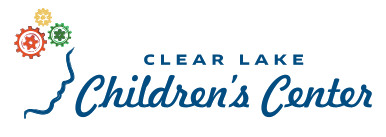Strategies for Successful Group Behavior and Participation
Strategies for Successful Group Behavior and Participation
Listen up, teachers, girl scout/boy scout leaders, team sports coaches, camp counselors, and youth group leaders: this one's just for you! We've compiled a list of the most important strategies for contributing to group progress while also emphasizing successful behavior and participation. Read on!
Structure
- Establish and maintain clear routines
- **Give children advance warning when the routine will be different
- Set clear limits and define what behavior is expected in each setting
- Announce upcoming transitions, such as a 2 minute warning before changing activities or settings
- Provide as much information as you can about new experiences in advance
- For multiple-step projects, provide visuals/examples each step of the way to illustrate the goal
- Use visual timers to help monitor time left on tasks – this is helpful for those who get frustrated by not finishing
Group Management
- Have clearly defined behavioral expectations and post them as a visual reference
- Assign jobs for all students. This contributes to a feeling of community and gives them a chance to be responsible and cooperative
- Add group incentives for accomplishing goals together such as small group points for good behavior, participation, or task completion
- Use auditory signals to get their attention (chime/bell), clap a pattern, or use a clear verbal signal such as “1,2,3, eyes on me”
- Make sure to build in lots of movement opportunities to keep children engaged and interested
- To increase participation, incorporate opportunities to actively respond, such as “Turn to your partner and tell one thing….”
- Always provide lots of positive reinforcement (verbal, gestural, tangible, etc.) to make group activities enjoyable
- Consider having a behavior monitoring system (green/yellow/red, happy face/sad face, etc) to give feedback on how they are doing
- To reduce issues while “waiting” for a turn, teach the concept of a “waiting turn”: “When it’s not your turn to do the activity, it’s your “waiting turn”, and you get to help by doing x, y, z”
Communication
- Use brief, clear statements with one step at a time.
- Avoid lengthy lectures and keep kids actively engaged whenever possible
- Use more Do’s than Don’ts! For example, say: “Sit down over here” instead of “Don’t go over there”
- Be direct! Avoid sarcasm and indirect requests. For example, say: “Take turns” instead of “I’m waiting for you to play nicely”
- Avoid requests disguised as choices. Say “Please put that down” instead of “Can you stop doing that?”
- Pair your words with pictures/visuals, gestures, demonstrations, and physical prompts
- Be consistent and don’t make threats you can’t follow through on
- Praise, praise, praise! This is important verbal feedback letting the child know what s/he did right
- Use specific praise like “Nice turn taking, you two!” rather than general praise like “Good job!”
Addressing Problem Behaviors
Preventing Issues
- Reward children for getting attention in positive ways
- Provide choices when possible (“Which would you like to put away first, the blocks or the crayons?”)
- Distraction can be a legitimate strategy!
- Choose your battles. Rather than getting upset about every little problem, address the behaviors that are most harmful toward self or others
- Anticipate problem behaviors and intervene before they get out of control
- For every negative comment a child hears, s/he should hear at least 3 positives!
- Watch for patterns in problem behavior: time of day, type of task, unfamiliar settings, noise level, number of people around, etc. This may contribute to the solution!
During a Tantrum/Meltdown
- Remain calm, do not argue, and never raise your voice at the child
- Try to distract child with another activity or a break from what’s going on
- Maintain child’s safety and the safety of others; call for assistance if necessary
- Discuss problematic behavior with parent to find out if there are patterns across settings
